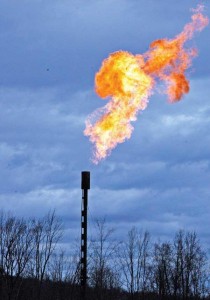The Alamo Area Council of Governments will hold an executive meeting on Wednesday to discuss ozone levels in South Texas, including what whether drilling in the Eagle Ford Shale plays a role.
Related: EPA Finds Little Risk to Drinking Water from Fracking
The AACOG is responsible for planning, information, and coordination activities for the region’s air quality that includes some of the top producing counties in the Eagle Ford.
The Council is concerned that the region historically has trouble staying within the federal standards for ozone this time of year and is proposing that private citizens get involved.
“There are a number of things we all can do to help our air quality. We’re basically asking people to limit outside activities that involve use of fuel.”
Some of the suggestions for people to reduce ground-level ozone are:
- Ride a bus, bicycle or carpool instead of driving
- Avoid drive-through lanes
- Take a sack lunch to work or walk to lunch
- Drive at moderate speeds to limit car exhausts
Meeting Details
July 22nd at 8:30am AACOG Al J. Notzon III Board Roo 8700 Tesoro Drive Suite 100 San Antonio, TX 78217
Read more at: aacog.com


